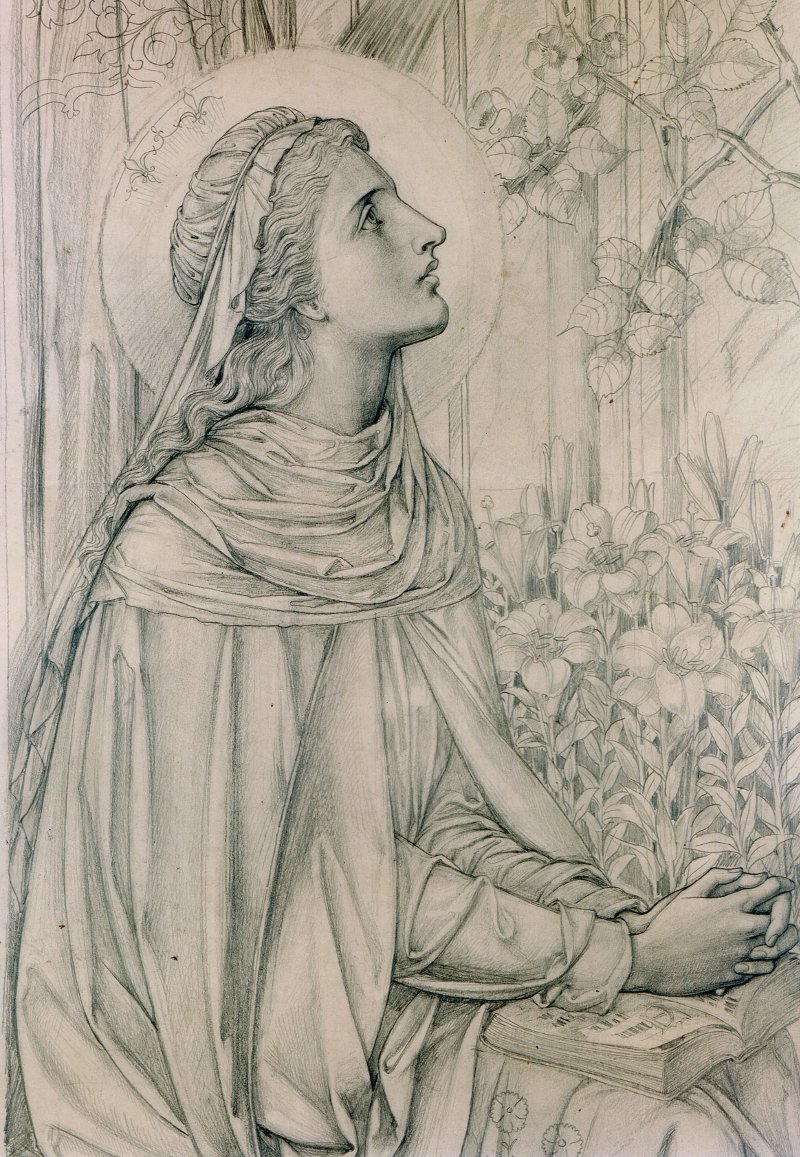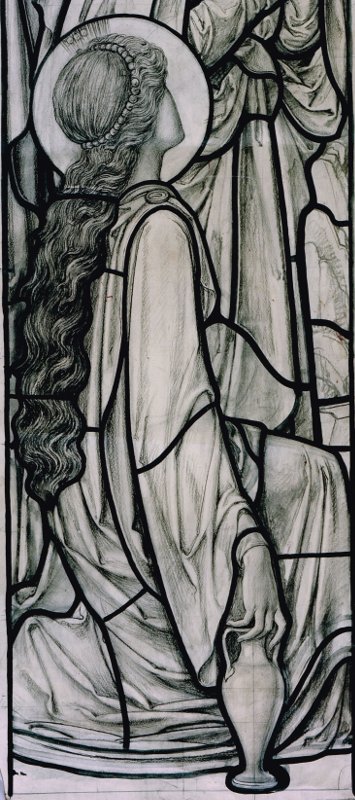Cartoons
The Art of creating a Stained Glass Window
"The qualities needed in the design are beauty and character of outline; exquisite, clear, precise drawing of incident." William Morris (1890)
Most of the work undertaken by Henry Thomas Bosdet were commissions in which, while keeping to the design philosophy as formulated by William Morris, he also had to meet the requirements of his clients and also to ensure that his design was in keeping with the windows' eventual location. Bosdet was much influenced by the pre-Raphaelite movement and their style and intense colouring is a significant feature of all his windows.
The first practical step towards the creation of a stained glass window was for Bosdet to create a small pencil sketch incorporating the themes proposed. Bosdet thus needed not only artistic skills but the ability to visualise how the final design would look rendered into coloured glass drawing its life and vibrancy from light coming from behind it rather than, as with other works of art, light striking it. The unique distinction of stained glass is that it can seem to create light from within itself.
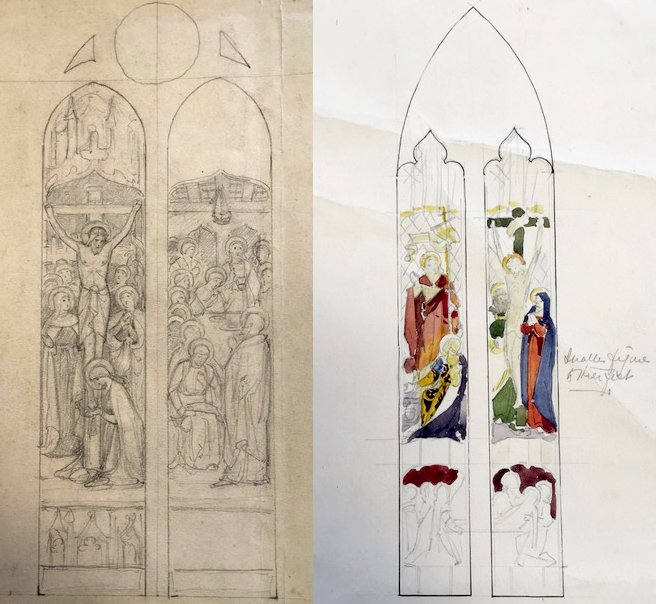
The next phase is for the original drawing to be rendered into a watercolour to bring the concept alive.
Both the original sketch and the resulting water colour are scaled down versions of the final window and may well pass through many hands and possible modification before acceptance.
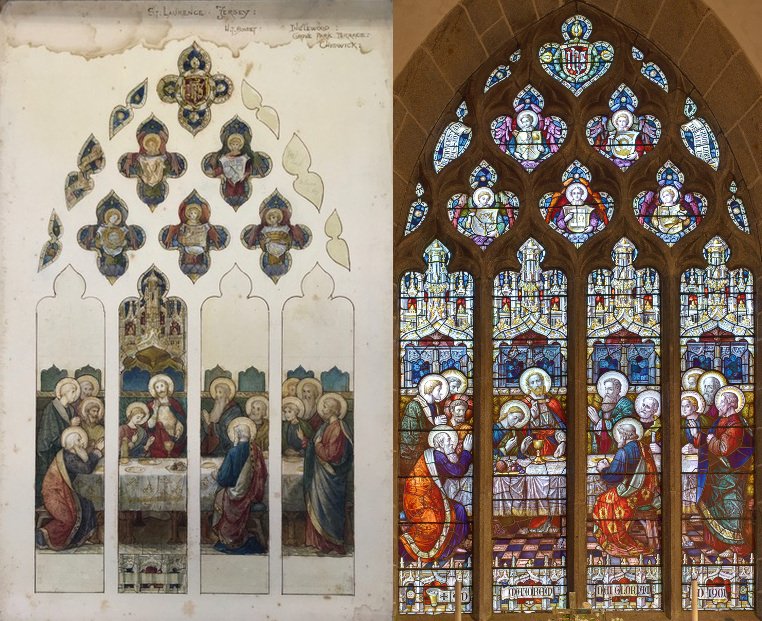
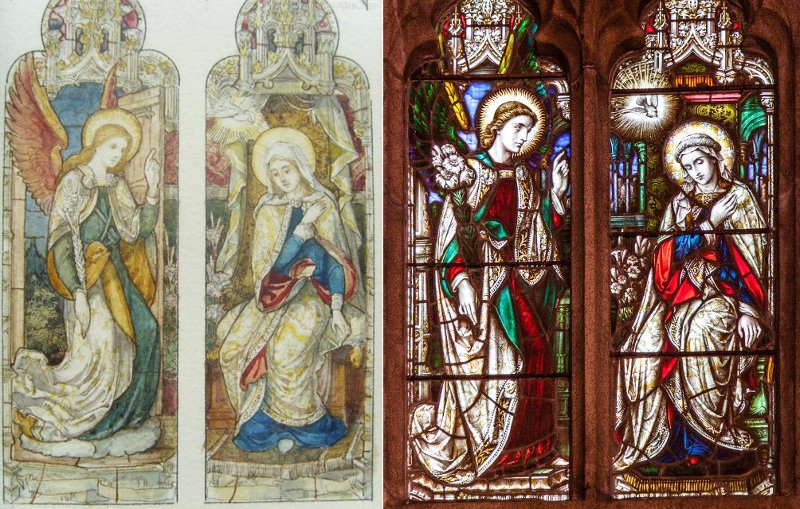
Once the design has been agreed, the artist will make a full size drawing on paper of the design for the window. This is known as a cartoon and is a technique adopted by Old Masters down the ages. The cartoon is a work of art in its own right and this is certainly true of Bosdet's works which particularly reflect his skill in life drawing for which he was Principal at the Royal Academy for many years.
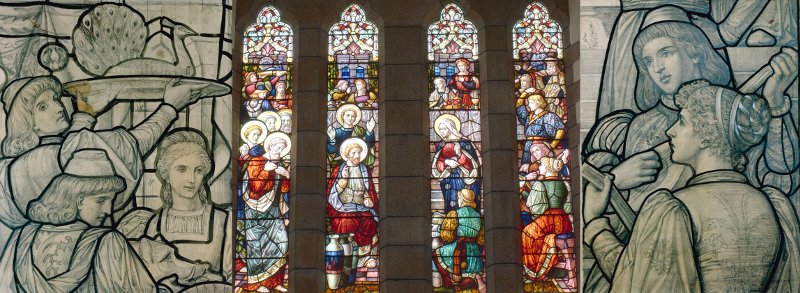
The cartoon not only shows the final design but also maps out the individual pieces of coloured glass needed in the finished window. The cartoon is sent to the stained glass studio where the paper drawing is secured to a board and used as a template for cutting the individual coloured glass pieces. When the pieces are cut they will be slightly smaller than indicated on the cartoon to allow for the leading that will hold the individual pieces in place.
In practice few cartoons survive this process but Jersey Heritage do have a large selection of Bosdet cartoons, several of which have been conserved, mounted, and framed to allow viewing without damage to the artwork.
A Bosdet cartoon of a design proposed for a St George window is also held by the Victoria and Albert Museum.
